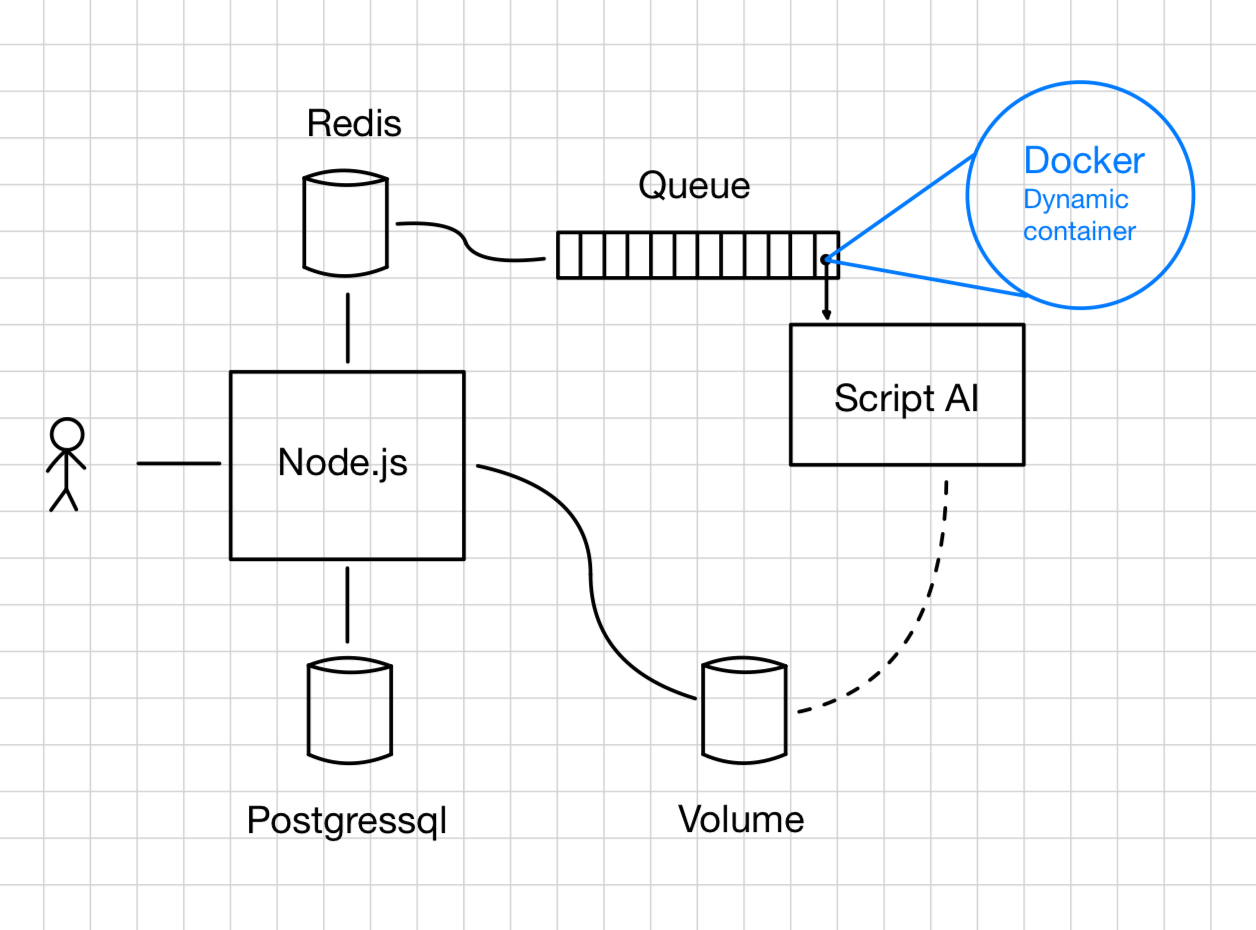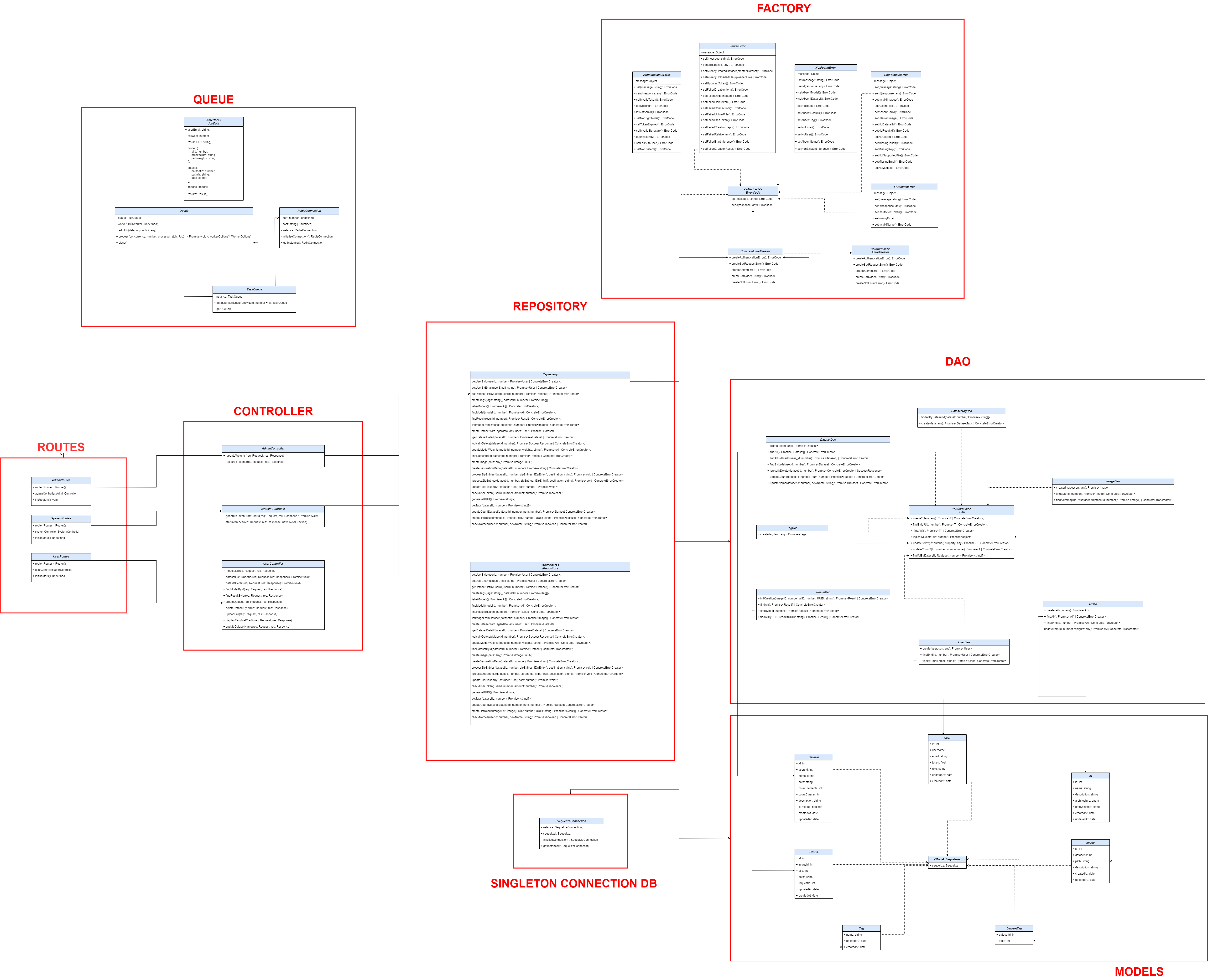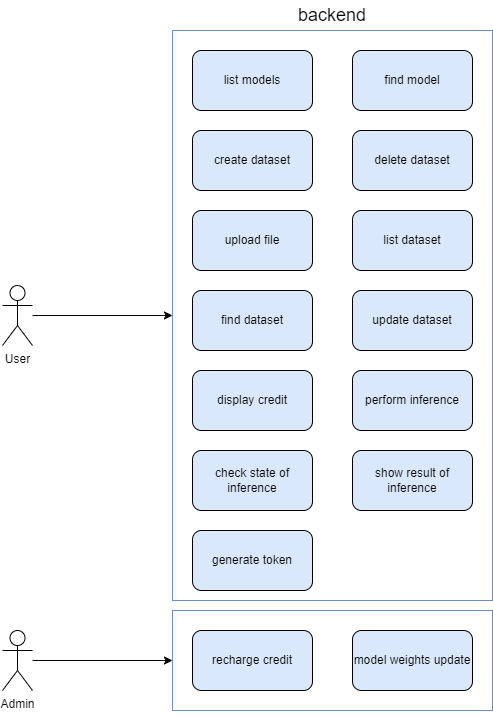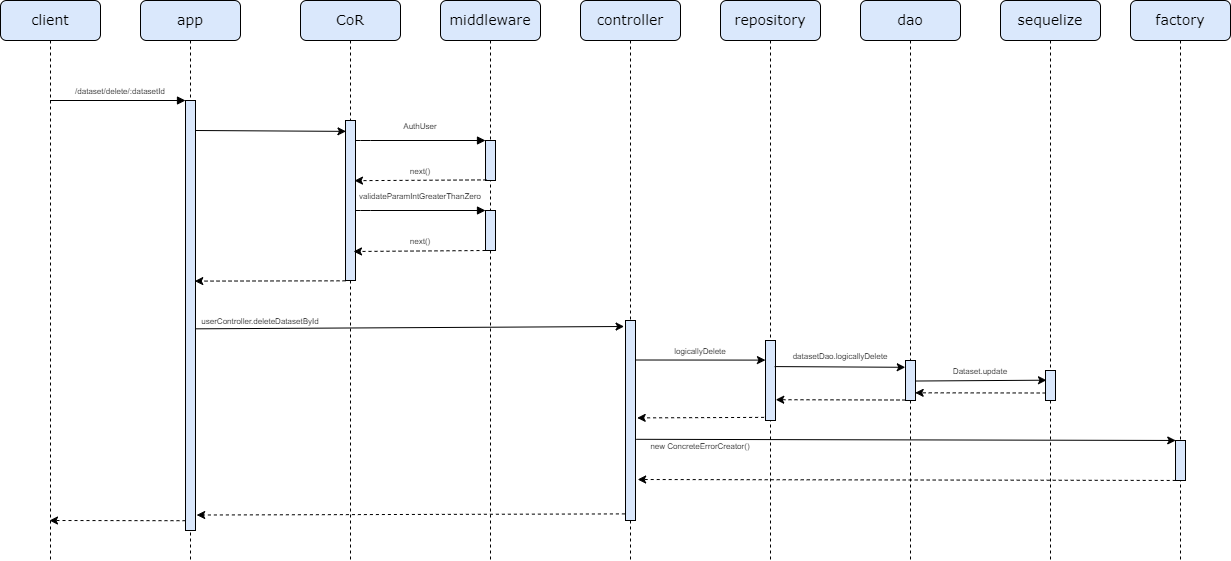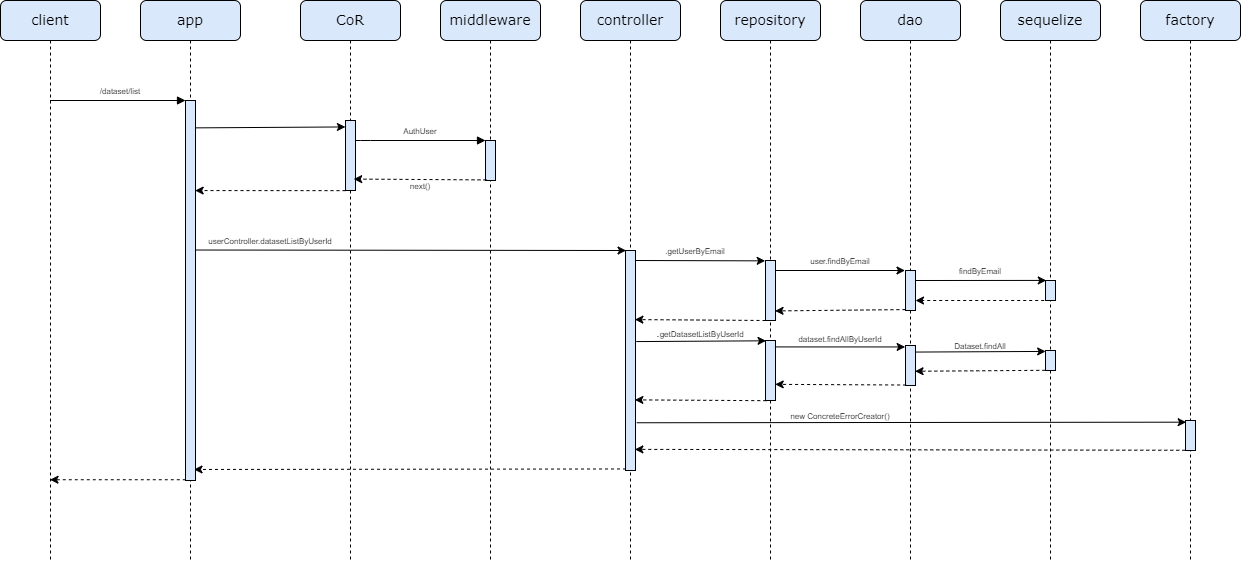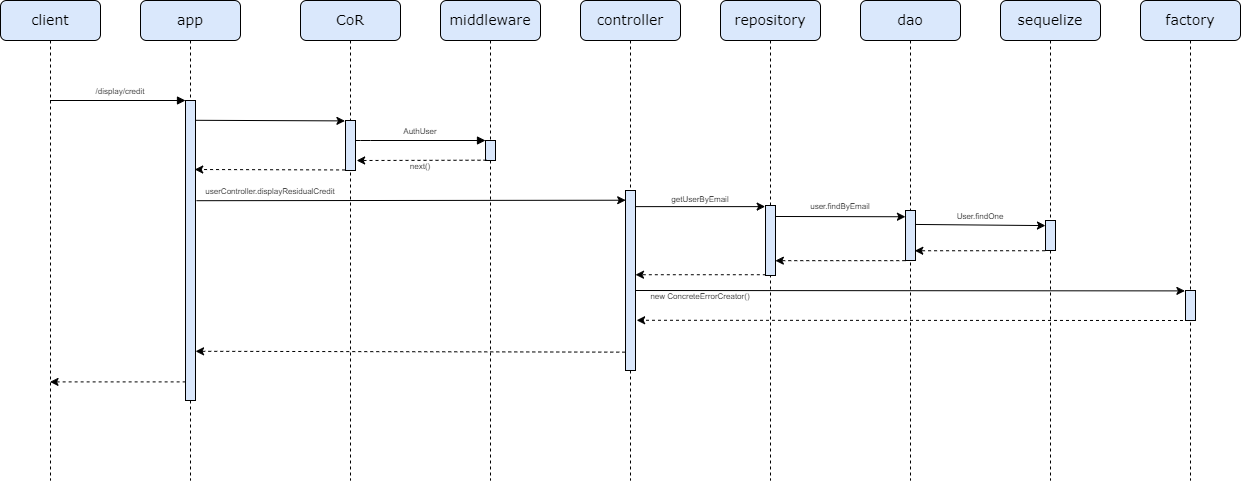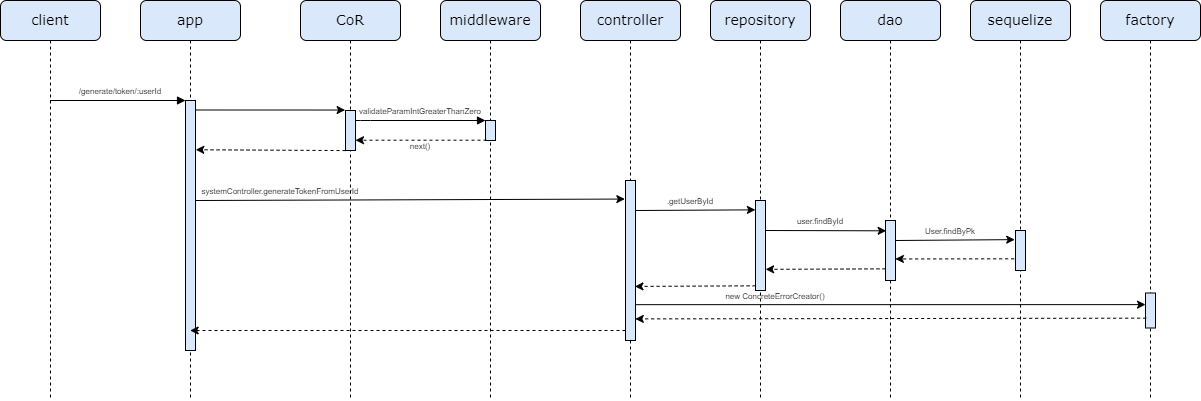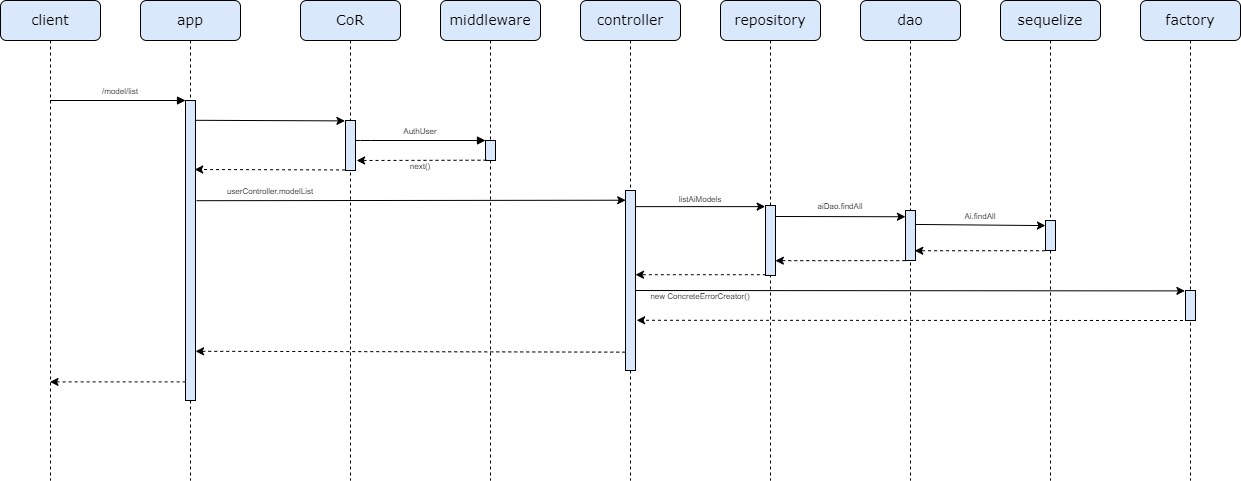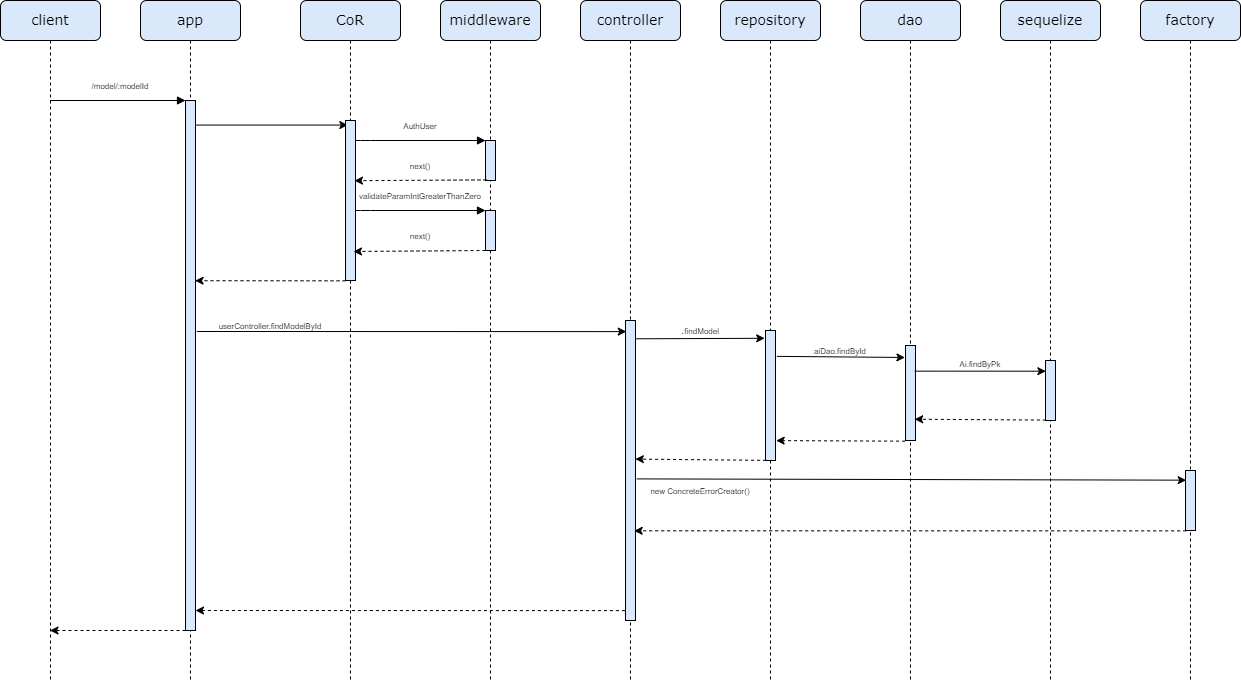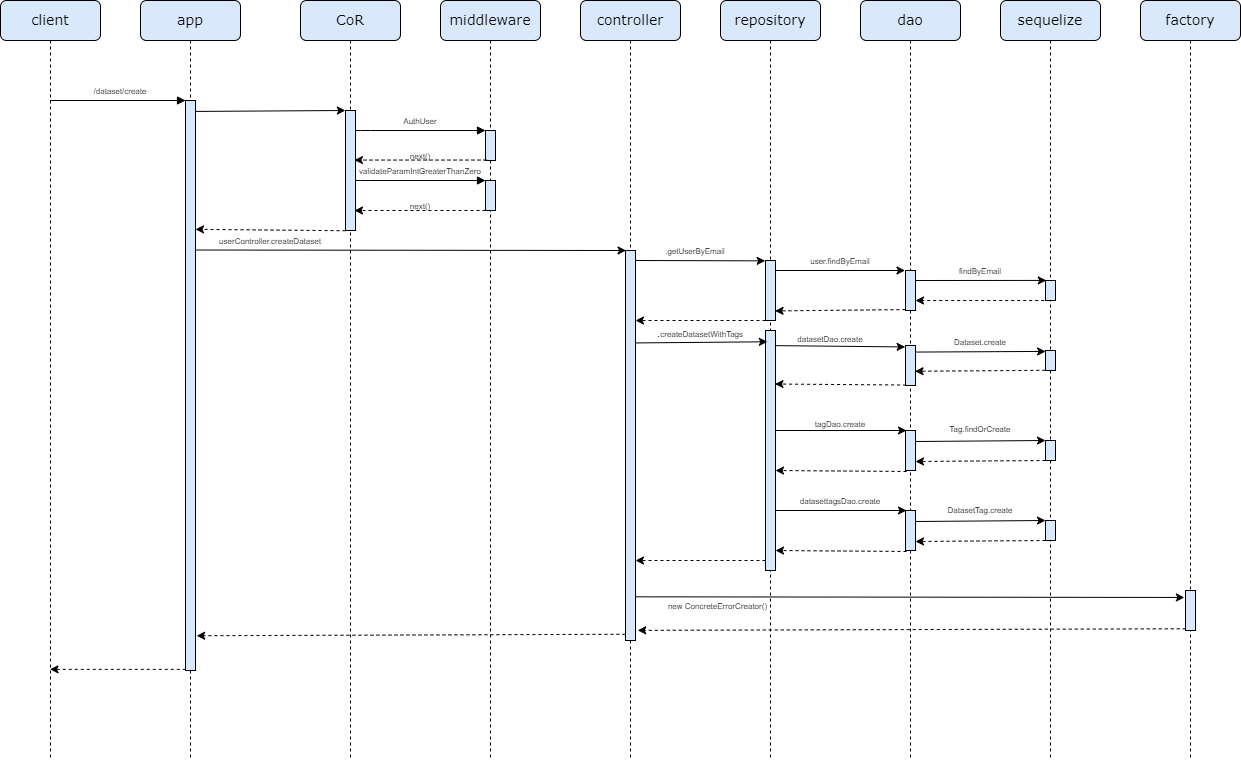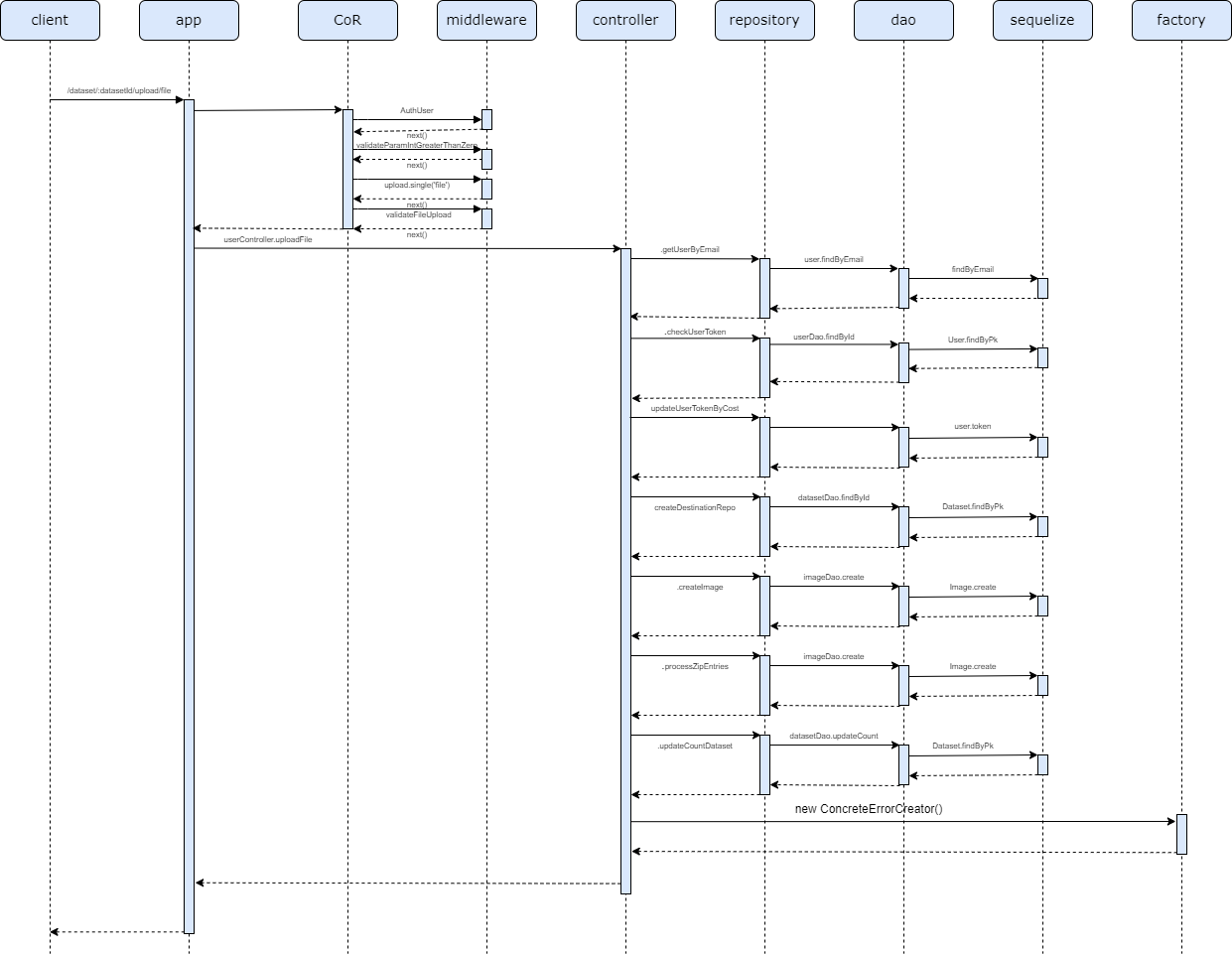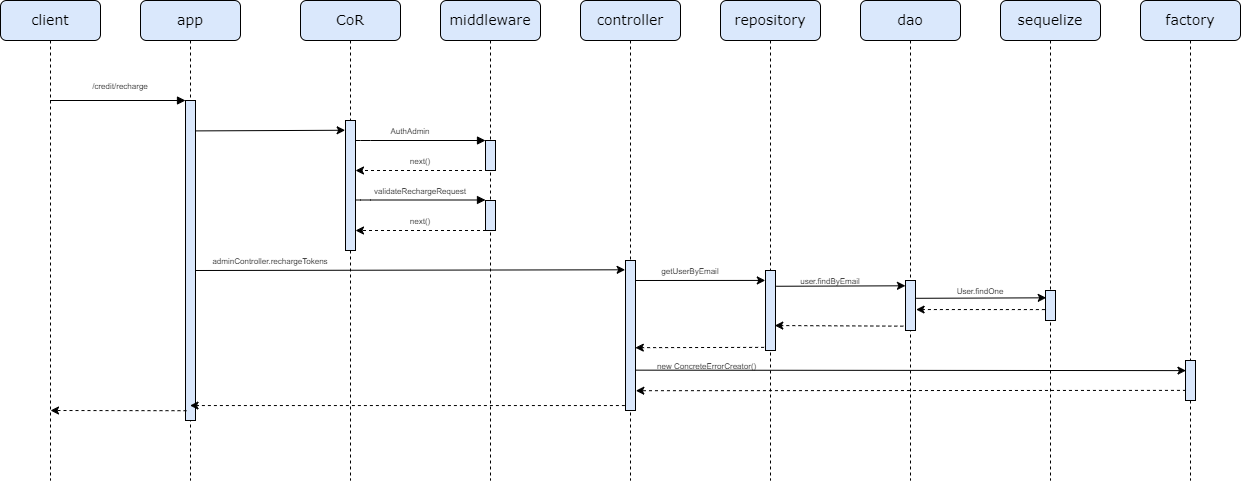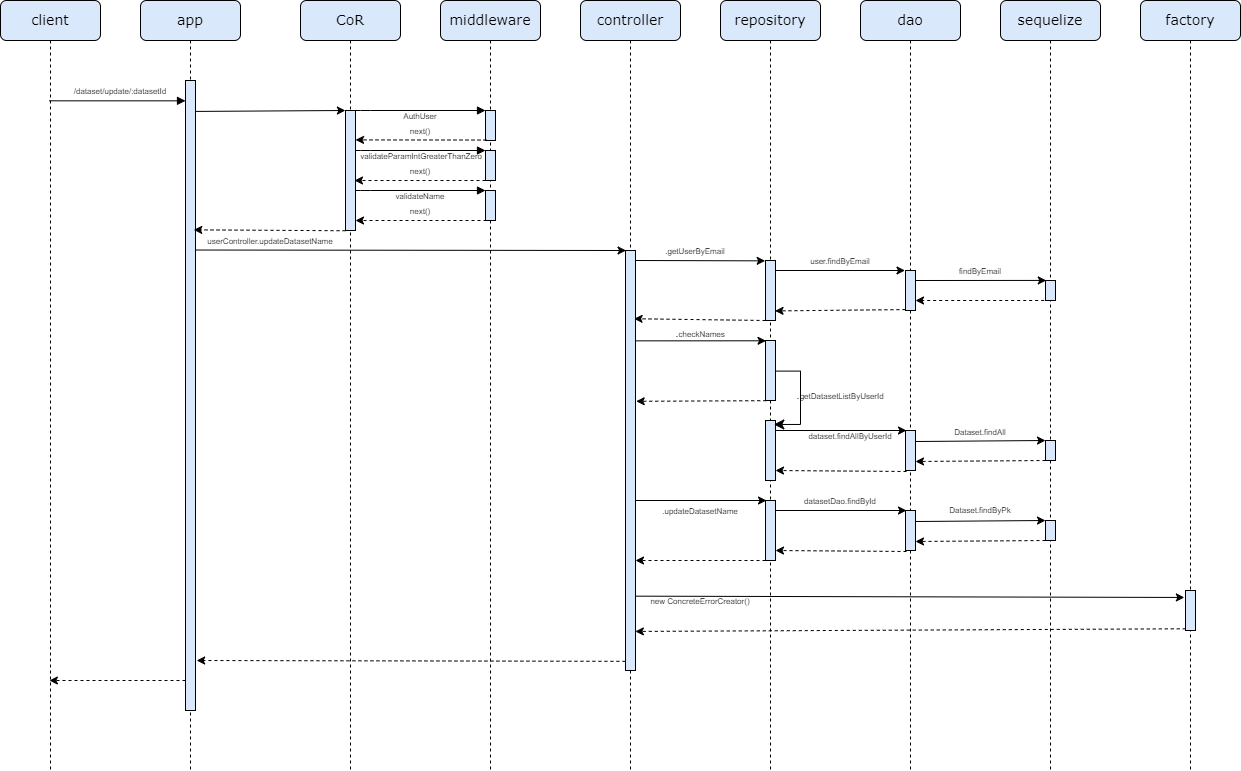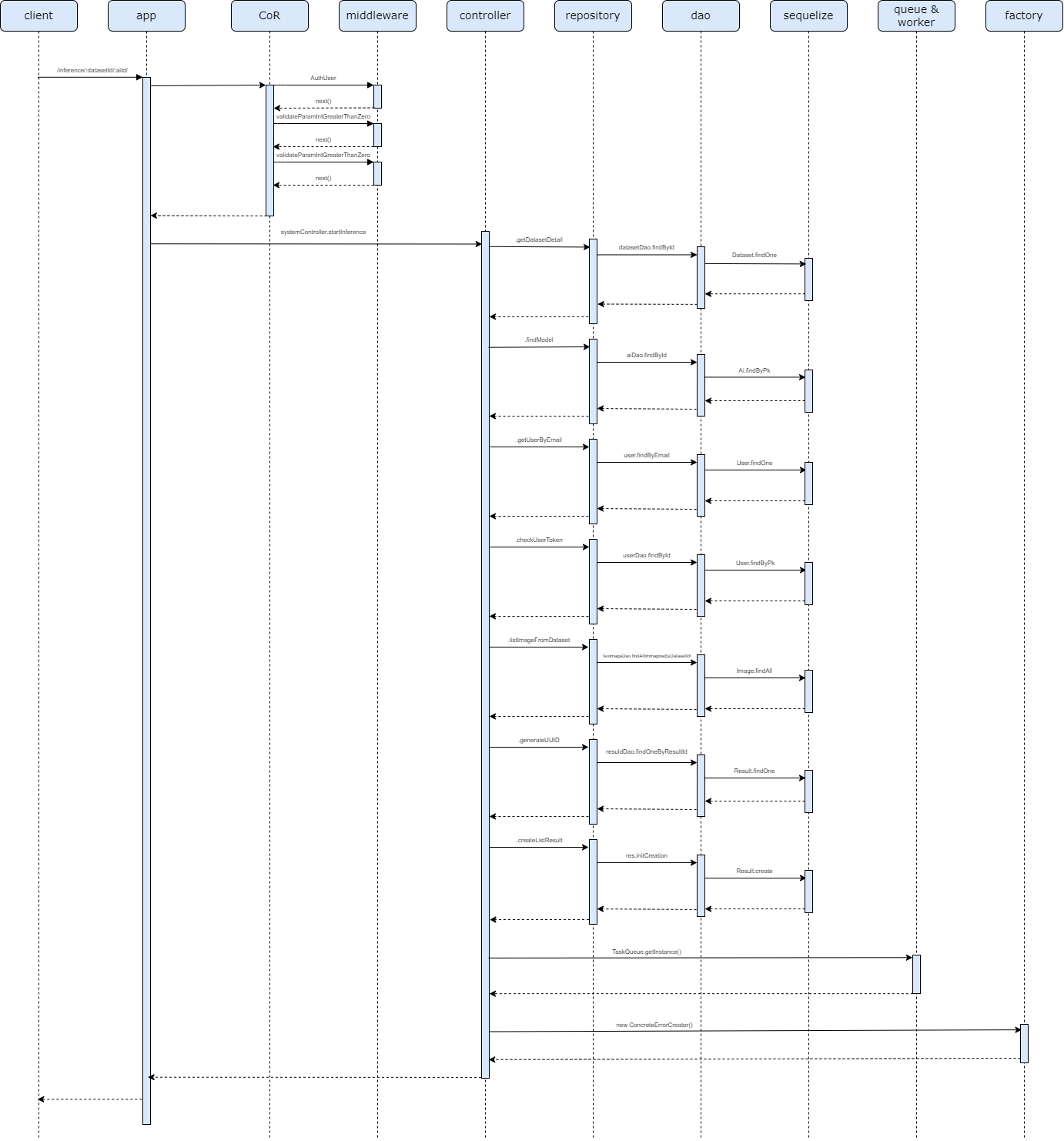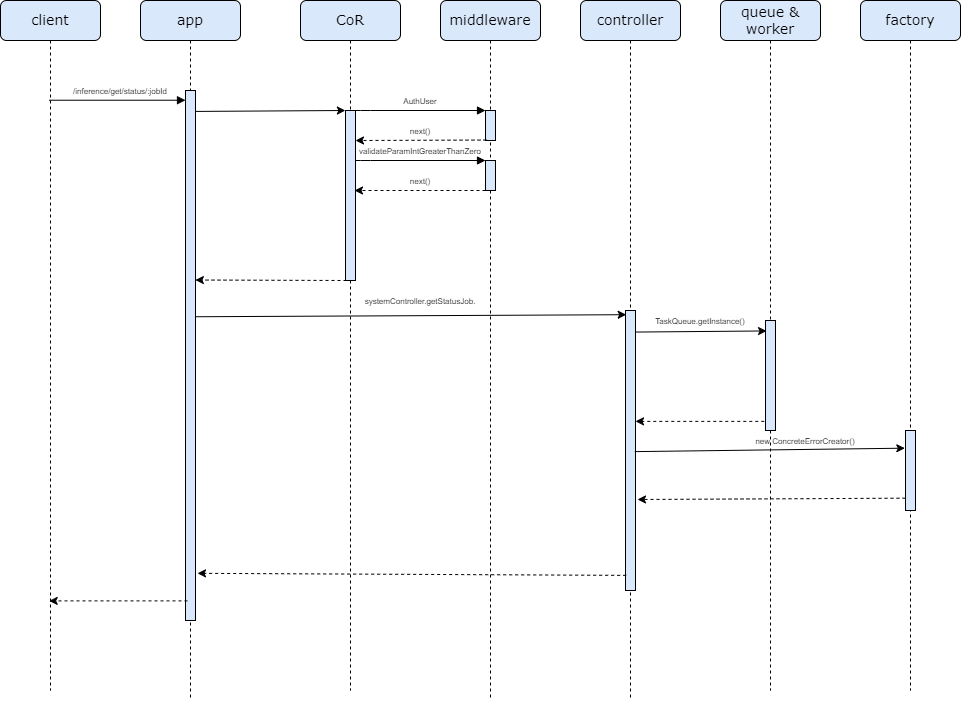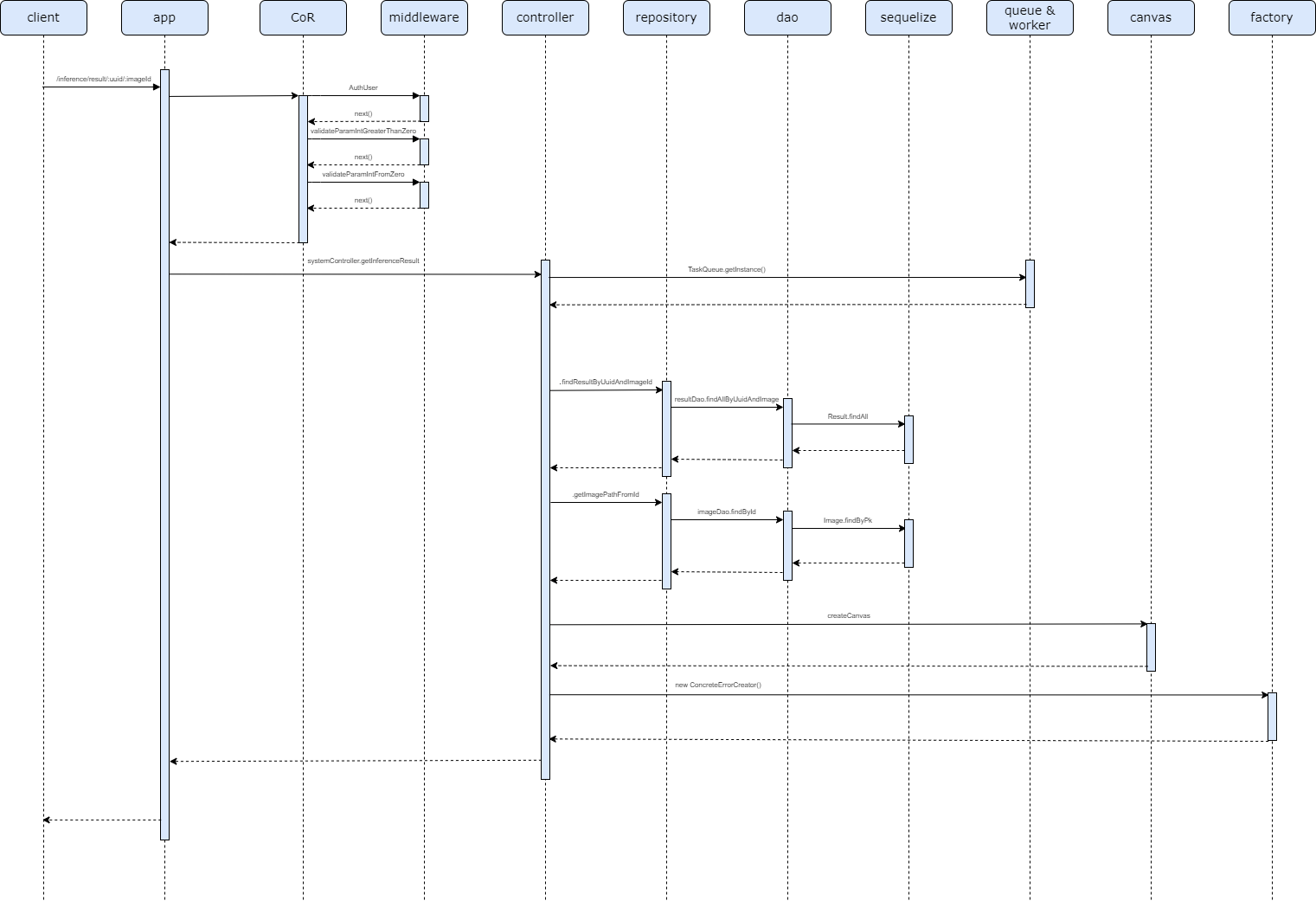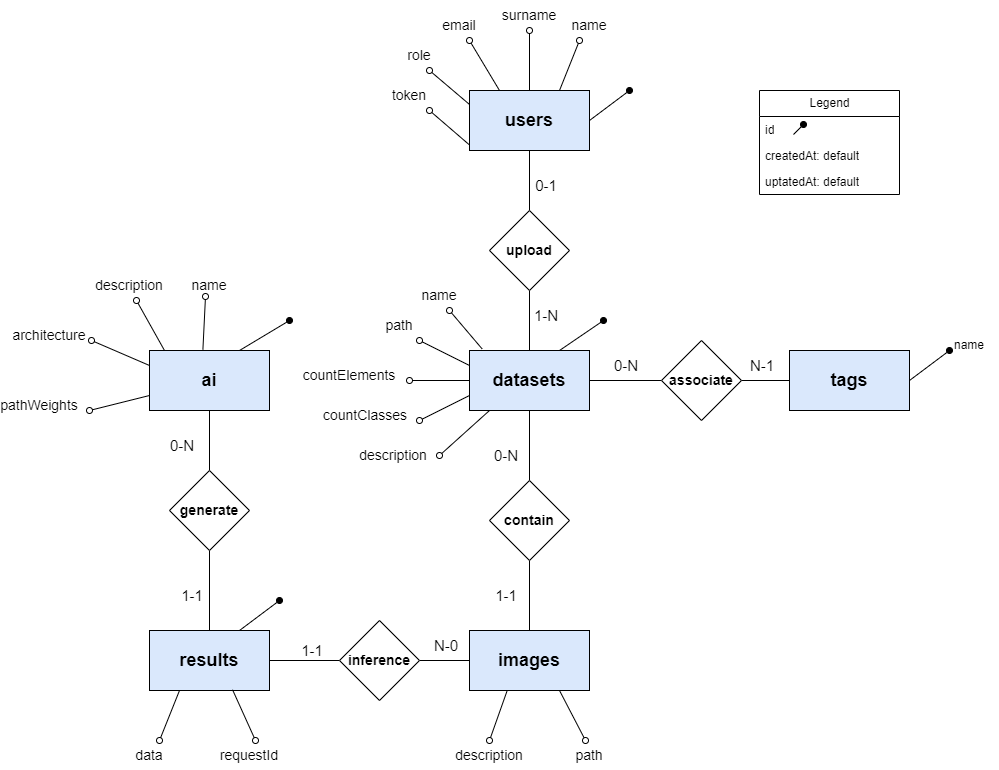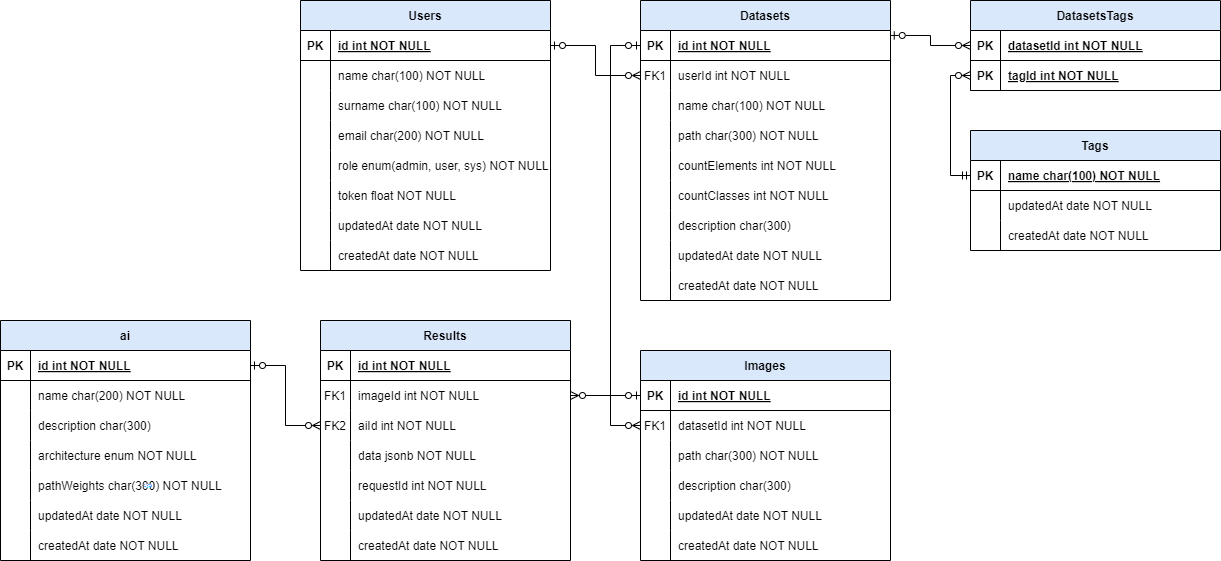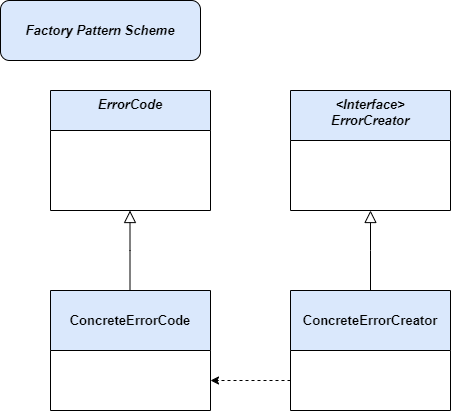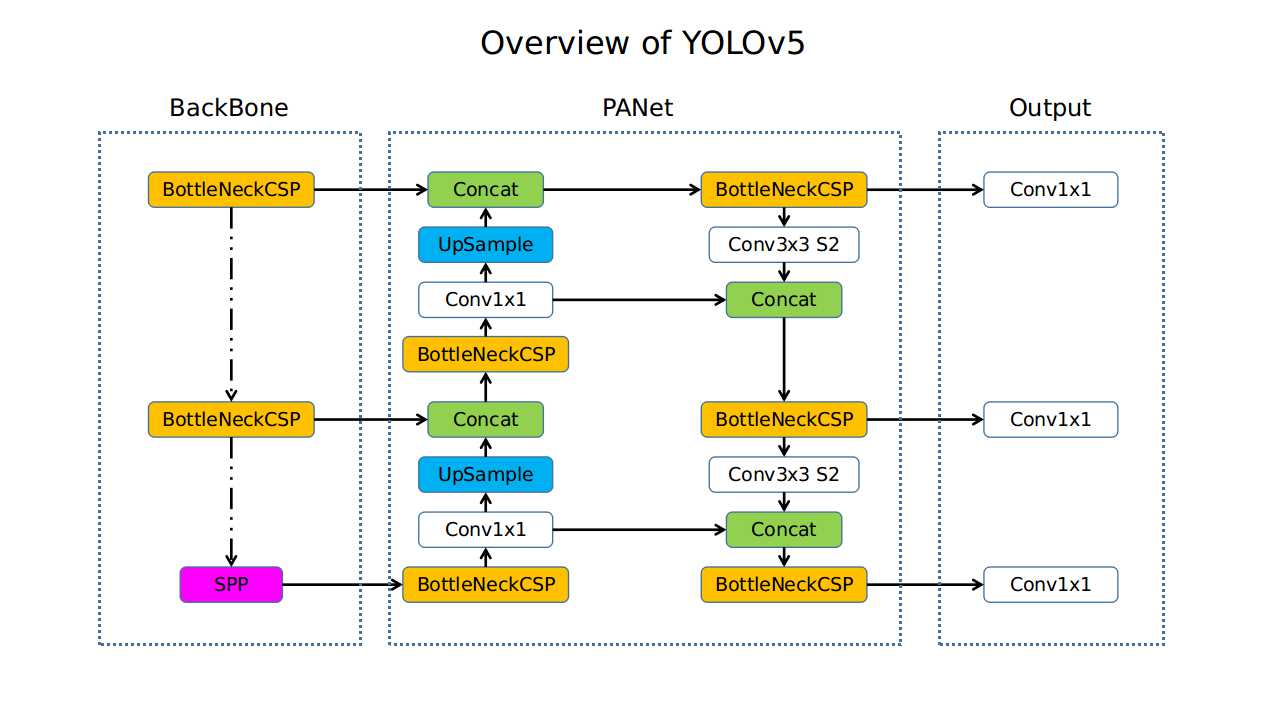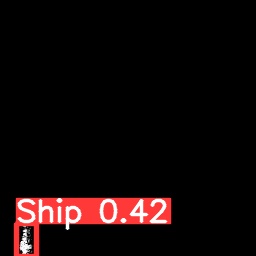- Introduction
- Project Goal
- Quick Start
- Infrastructure
- Design
- Database
- Patterns
- Proposed Neural Network models
- API Testing with Postman
- Authors
- License
The IntelliInfer project, developed for the Advanced Programming exam at the Polytechnic University of the Marche (UNIVPM) during the academic year 2023-2024, represents an advanced API for managing datasets and executing inferences based on artificial intelligence models. This project was conceived to facilitate interaction with data and leverage the power of artificial intelligence to extract meaningful information from it. It was developed during the Master's degree program in Computer Engineering and Automation.
The main goal of IntelliInfer is to provide an API for loading datasets, managing them, and using AI models to perform inference. Users can upload their datasets and utilize the available models to make predictions on new data.
Follow these steps to get the project up and running quickly.
First, clone the repository to your local machine using Git:
git clone https://github.com/125ade/IntelliInfer.git
cd IntelliInferDownload the .env file and place it in the root directory of the project. The .env file contains environment variables required for the project to run. Below is an example of the .env file for a test:
DOCKER_HOST=unix:///var/run/docker.sock
CONTAINER_IMAGE_NAME=intelliinfer-test
CONTAINER_IMAGE_YOLO_NAME=intelliinfer-yolo
CONTAINER_TEST_NAME=working-test
CONTAINER_YOLO_NAME=working-yolo
POSTGRES_PORT=5432
POSTGRES_USER=myuser
POSTGRES_HOST=database
POSTGRES_PASSWORD=mypassword
POSTGRES_DB=db_inference
API_PORT=3000
API_HOST=api
API_SECRET_KEY_NAME=test_purpose_private_key.pem # to change for deploy
API_PUBLIC_KEY_NAME=test_purpose_public_key.pem # to change for deploy
INFERENCE_COST=2.5
TOKEN_EXPIRE=24h #12h
TOKEN_ALGORITHM=RS256
API_SERVICE_NAME=IntelliinferApi
DESTINATION_PATH_WEIGHTS=/app/media/weights # weights path
FILE_WEIGHTS_EXTENSION=.pt
SEQUELIZE_DIALECT=postgres
SEQUELIZE_LOGGING=false
NODE_ENV=production
LOG_OUTPUT=file # file/both/console
LOG_INTERVAL_ROTATION=1d
LOG_PATH=/app/logs # logs path
LOG_ACCESS_DIR=access # logs directory
LOG_ERRORS_DIR=errors # error logs directory
LOG_SEQUELIZE_DIR=sequilize # seuelize logs directory
REDIS_PORT=6379
REDIS_HOST=redis
DOKER_QUEUE_NAME=dockerTaskQueue
For security purposes, regenerate your public and private keys. This is essential for handling authentication and other security-related functionalities.
-
openssl genrsa -out test_purpose_private_key.pem 2048
-
openssl rsa -in test_purpose_private_key.pem -pubout -out test_purpose_public_key.pem
Place both private.pem and public.pem in a secure location, and ensure the path to these keys is correctly referenced in your application configuration (usually set in the .env file).
Now that you have everything set up, use Docker Compose to start all the services defined in the docker-compose.yml file:
docker-compose --env-file .env up --buildThis command will:
- Build and start the Docker containers for all the microservices.
- Set up the networking between containers.
- Ensure that Redis, the API server, and other services are running correctly.
-
Docker and Docker Compose: Make sure Docker and Docker Compose are installed on your machine. You can download them from Docker's official site.
-
Environment Variables: Adjust the values in the .env file as per your development and production needs.
-
Logs: Check the logs for each service to ensure everything is running smoothly. You can view logs using the command:
docker-compose logs -f
IntelliInfer leverages several powerful technologies to ensure efficient and scalable deployment and job management, such as Docker, Docker Compose, BullMQ, and Redis.
Docker is a containerization platform that allows us to package applications and their dependencies into portable containers that can run consistently across various environments, ensuring that our microservices behave the same way in development, testing, and production.
We use Docker to:
- Encapsulate our inference microservices: Each microservice runs in its own container, ensuring isolation and consistency.
- Simplify deployment: Containers can be easily deployed, stopped, and scaled without worrying about underlying hardware or OS specifics.
- Enhance reproducibility: Docker ensures that our development and production environments are identical, reducing various issues.
It is also important to note that the potential of the Docker API was exploited to dynamically generate the containers where the inference operation is carried out.
Docker Compose is a tool for defining and running multi-container Docker applications. With Docker Compose, we can define all the services our application needs (such as microservices, databases, and message queues) in a single YAML file and manage them collectively.
We use Docker Compose to:
- Orchestrate our microservices: Define and run our inference microservices, Redis, and other components together.
- Automate the setup: Easily spin up the entire stack with a single command (
docker-compose up), including network configuration and service dependencies. - Manage configurations: Centralize and manage configuration settings for all services in a single file.
Redis is an in-memory data structure store that we use primarily as a database and message broker. It is known for its high performance and versatility.
In our infrastructure, Redis is used to:
- Store job information: Act as a database to store the state and metadata of jobs queued for processing.
- Facilitate messaging: Serve as a message broker to manage the communication between different microservices via job queues.
- Provide persistence: Although primarily in-memory, Redis supports persistence, ensuring that job states are not lost between restarts.
BullMQ is a Node.js library for creating robust and scalable job queues using Redis. It allows us to manage background jobs and processing with ease.
We use BullMQ to:
- Manage job queues: Queue and process inference jobs dynamically, ensuring efficient task distribution among available microservices.
- Handle retries and failures: Automatically retry failed jobs and log errors for later inspection.
- Monitor job progress: Provide real-time insights into job status, including completed, failed, and in-progress jobs.
Here's a more detailed look at how these components work together in our infrastructure:
-
Microservices Deployment:
- Docker containers are used to deploy each microservice ( API, Postgre Database, Redis, YOLO neural network, inference simulation), ensuring they run in isolated and consistent environments.
- Docker Compose orchestrates these microservices setting up the necessary networking and dependencies automatically.
-
Job Management:
- Jobs (inference requests) are created and added to queues managed by BullMQ.
- Redis acts as the job database, storing details about each job, including its status, progress, and results.
-
Processing and Monitoring:
- Microservices pull jobs from the queues, process them, and update the job status in Redis.
- BullMQ provides mechanisms to monitor job status and handle retries in case of failures, ensuring robustness and reliability.
By combining these technologies, our infrastructure can dynamically scale, efficiently manage resources, and ensure reliable job processing. This setup allows us to focus on developing high-quality inference models without worrying about the underlying deployment and job management complexities.
The class diagram shows a general overview of the structure of the project. The implementation relationships of the interfaces and the relationships between different classes are indicated. It is also possible to note which classes are involved in the use of the different patterns.
The use case diagram represents which routes are intended for use by the user and by the admin. It is possible to have an in-depth explanation of the latter later, together with the relevant sequence diagrams, which give a better representation of the flow of the project.
| Auth | Function | Role |
|---|---|---|
| Yes | recharge user credit | admin |
| Yes | update neural network model weights | admin |
| Yes | list neural networks’ models | user |
| Yes | show a specific neural network’s model | user |
| Yes | create a new dataset | user |
| Yes | delete a dataset | user |
| Yes | list all datasets | user |
| Yes | show a specific dataset | user |
| Yes | update a dataset | user |
| Yes | upload a file on a dataset | user |
| Yes | perform inference operation | user |
| Yes | check the state of the current inference operation | user |
| Yes | show inference results | user |
| Yes | check user’s remaining credit | user |
| No | generate auth token | all |
| No | check if the service is online | all |
| Type | Route |
|---|---|
| PUT | admin/credit/recharge/ |
| PUT | admin/model/:aiId/change/weights |
| GET | api/model/list |
| GET | api/model/:modelId |
| GET | api/dataset/list |
| GET | api/dataset/:datasetId |
| POST | api/dataset/create |
| PUT | api/dataset/update/:datasetId |
| DELETE | api/dataset/delete/:datasetId |
| POST | api/dataset/:datasetId/upload/file (zip & img) |
| POST | api/inference/:datasetId/:aiId/ |
| GET | api/inference/get/status/:jobId |
| GET | api/inference/result/:jobId/:imgId |
| POST | api/display/credit |
| GET | api/generate/token/:userId |
| GET | /check/health |
Route to logically delete a dataset:
Route to find a specific dataset given its id:
Route to display all available datasets for a user:
Route to display the user's residual credit:
Route to generate token for user or admin:
Route to display list of all available AI models:
Route to find a specific AI model given its id:
Route to create a dataset:
Route to upload a file (image or zip):
Route to recharge user's credit:
Route to update weights' path for an AI model:
Route to update dataset's name:
Route to init a new inference operation:
Route to check the state of an inference:
Route to display the result of the inference:
Let's now look at the structure of our database and the patterns we used to manage it.
This project uses PostgreSQL as relational database. It was chosen for its advanced capabilities, its reliability and its compliance with SQL standards, making it ideal for applications requiring robust and secure data management. Through it we manage and save data relating to users, datasets and related images, to the AI architectures themselves and their results. Below you can find the structure of the database, in terms of associations and table field.
Sequelize is an ORM (Object-Relational Mapping) for Node.js used to facilitate the management of CRUD operations and the tables definition. We define models for each table in the database and use Sequelize as an high level interface to interact with PostgreSQL.
In Sequelize, database tables are represented by models. Each model is a class that maps to a specific table in the database, and contains table attributes, data types, validations, and relationships with other tables.
Ai.init(
{
id: {
type: DataTypes.INTEGER,
primaryKey: true,
allowNull: false
},
name: {
type: DataTypes.CHAR(200),
allowNull: false
},
description: {
type: DataTypes.CHAR(300),
},
pathweights: {
type: DataTypes.CHAR(300),
allowNull: false
},
architecture: {
type: DataTypes.ENUM,
values: Object.values(AiArchitecture),
allowNull: false,
defaultValue: AiArchitecture.YOLO
}
},
{
sequelize,
modelName: "Ai",
tableName: "ai",
timestamps: true,
createdAt: 'created_at', // Utilizza la convenzione 'created_at' per il timestamp di creazione
updatedAt: 'updated_at'
},
);Sequelize also allows to define relationships between models, such as one-to-many, many-to-many, and one-to-one associations, defined using methods such as hasMany, belongsTo, hasOne, and belongsToMany. In particular, in many-to-many relationships an intermediate table was defined:
DatasetTags.init(
{
// Chiavi esterne
datasetId: {
type: DataTypes.INTEGER,
allowNull: false,
primaryKey: true,
field: 'dataset_id'
},
tagId: {
type: DataTypes.STRING,
allowNull: false,
primaryKey: true,
field: 'tag_id'
}
},
{
sequelize,
modelName: 'DatasetTags',
tableName: 'datasetstags',
timestamps: false,
}
);The Singleton pattern is used to ensure that only one instance of the database connection is created. This helps to efficiently manage connection resources and prevent problems related to managing multiple simultaneous connections. In IntelliInfer the Singleton pattern is used to guarantee a single connection to Redis and to the database and to guarantee having a single access to the job queue. It ensures that all application components use the same instance, improving consistency and performance.
To do this, it uses a private constructor, accessible only via the getInstance() method. When accessed for the first time, the method creates an instance and returns the entity of the object to the client, while in subsequent calls the entity of the already existing object is returned.
export class SequelizeConnection {
// Connection instance
private static instance: SequelizeConnection;
public sequelize!: Sequelize;
/**
* The Singleton's constructor should always be private to prevent direct
* construction calls with the `new` operator.
*/
private constructor() {}
// Initialize connection
private static InitializeConnection(): SequelizeConnection {
const newInstance = new SequelizeConnection();
const user: string = process.env.POSTGRES_USER || "myuser";
const password: string = process.env.POSTGRES_PASSWORD || "mypassword";
const database: string = process.env.POSTGRES_DB || "db_inference";
const dialect: Dialect = process.env.SEQUELIZE_DIALECT as Dialect || 'postgres';
const host: string = process.env.POSTGRES_HOST || 'database';
const port: number = Number(process.env.POSTGRES_PORT || '5432')
const flag_log: boolean = Boolean(process.env.SEQUELIZE_LOGGING ) || true;
newInstance.sequelize = new Sequelize(
database,
user,
password,
{
dialect: dialect,
host: host,
port: port,
logging: flag_log ? logSequelize : false,
});
return newInstance;
}
/**
* static method that controls the access to the singleton instance.
*/
public static getInstance(): SequelizeConnection {
if (this.instance === undefined) this.instance = this.InitializeConnection();
return this.instance;
}
}We implemented the Data Access Object (DAO) pattern to manage database operations using Sequelize models. The DAO pattern is a structural pattern that abstracts and encapsulates all access to the data source and provide a consistent API for CRUD (Create, Read, Update, Delete) operations. It is an intermediary between the application's business logic and the database, it isolates the application layer from the persistence layer, making the codebase more modular and easier to maintain, and it promotes code reuse by centralizing data access logic. This results in a more robust, flexible, and scalable application architecture.
In detail, we defined a Dao Interface IDao to define all optional crud operations available for our models, and we defined for each Sequelize model a Dao class implementing the operations according to our needs.
export interface IDao<T> {
create?(item: any): Promise<T | ConcreteErrorCreator>;
findById?(id: number): Promise<T | ConcreteErrorCreator>;
findAll?(): Promise<T[] | ConcreteErrorCreator>;
logicallyDelete?(id: number): Promise<object>;
updateItem?(id: number, property: any): Promise<T | ConcreteErrorCreator>;
updateCount?(Id: number, num: number): Promise<T | ConcreteErrorCreator> ;
findAllByDatasetId?(dataset: number): Promise<string[]>;
}
export default class AiDao implements IDao<Ai> {
constructor() {}
// creates an ai model given a series of metadata
async create(aiJson: any): Promise<Ai> {
try{
const ai = await Ai.create(aiJson);
return ai;
} catch{
throw new ConcreteErrorCreator().createServerError().setFailedCreationItem();
}
}
// returns the list of all ai models on db
async findAll(): Promise<Ai[] | ConcreteErrorCreator> {
const models = await Ai.findAll();
if( models.length !== 0){
return models;
} else {
throw new ConcreteErrorCreator().createNotFoundError().setAbsentItems();
}
}
// finds a specific ai model given its id
async findById(id: number): Promise<Ai | ConcreteErrorCreator> {
const model = await Ai.findByPk(id);
if(!model){
throw new ConcreteErrorCreator().createNotFoundError().setAbstentModel();
}
return model;
}
// updates weights path of an ai specified by its id
async updateItem(id: number, weights: any): Promise<Ai | ConcreteErrorCreator> {
const model = await Ai.findByPk(id);
if(!model){
throw new ConcreteErrorCreator().createNotFoundError().setAbstentModel();
}
model.pathweights = weights;
model.save();
return model;
}
}To improve the modularity and testability of the code, the Repository pattern is used in combination with DAO pattern. The Repository pattern is placed at an higher level than the Data Access Object and on the contrary allows several different DAOs to interact. We defined a IRepository interface and we implemented the Repository class to define more complex operations that required the use of multiple DAO models.
export interface IRepository {
getUserById(userId: number): Promise<User | ConcreteErrorCreator>;
getUserByEmail(userEmail: string): Promise<User | ConcreteErrorCreator>;
getDatasetListByUserId(userId: number): Promise<Dataset[] | ConcreteErrorCreator>;
createTags(tags: string[], datasetId: number): Promise<Tag[]>;
listAiModels(): Promise<Ai[] | ConcreteErrorCreator>;
findModel(modelId: number): Promise<Ai | ConcreteErrorCreator>;
findResult(resultId: number): Promise<Result | ConcreteErrorCreator>;
listImageFromDataset(datasetId: number): Promise<Image[] | ConcreteErrorCreator>;
createDatasetWithTags(data: any, user: User): Promise<Dataset> ;
getDatasetDetail(datasetId: number): Promise<Dataset | ConcreteErrorCreator> ;
logicallyDelete(datasetId: number): Promise<SuccessResponse | ConcreteErrorCreator>;
updateModelWeights(modelId: number, weights: string ): Promise<Ai | ConcreteErrorCreator>;
findDatasetById(datasetId: number): Promise<Dataset | ConcreteErrorCreator>;
createImage(data: any): Promise<Image | null>;
createDestinationRepo(datasetId: number): Promise<string | ConcreteErrorCreator> ;
processZipEntries(datasetId: number, zipEntries: IZipEntry[], destination: string): Promise<void | ConcreteErrorCreator>;
updateUserTokenByCost(user: User, cost: number): Promise<void>;
checkUserToken(userId: number, amount: number): Promise<boolean>;
generateUUID(): Promise<string>;
getTags(datasetId: number): Promise<string[]>;
updateCountDataset(datasetId: number, num: number): Promise<Dataset|ConcreteErrorCreator>;
createListResult(imageList: Image[], aiID: number, UUID: string): Promise<Result[] | ConcreteErrorCreator>;
checkNames(userId: number, newName: string): Promise<boolean | ConcreteErrorCreator>;
}The Factory pattern is used to define and manage exceptions. It is a creational pattern that provides an interface for creating objects, allowing subclasses to alter the type of objects that will be created. By using this pattern for exceptions, we centralize the creation logic, making it easier to manage and extend our error handling mechanism. It allows us to create different types of specific exception object in a consistent and centralized manner.
The Model View Controller (MVC) is an architectural pattern used to separate responsibilities and organize code in a modular and maintainable way. The model (our Sequelize models) represents the data structure of the application, the controllers act as intermediaries between the model and the view, while our view is the Success Response interface implemented for each standardized output of our routes, except for the health check route and the 404 error route.
In our application, we supposed users are able to perform inference on a variety of image datasets using different artificial intelligence models and various weight combinations. Specifically, in IntelliInfer, we implemented inference on a YOLOv5 architecture. Furthermore, considering the possibility of having multiple models, we have introduced also a simulator of inference.
YOLOv5 is an object detection model that builds upon the success of its predecessors. Developed by Ultralytics, YOLOv5 offers significant advancements in speed and accuracy compared to previous versions. It employs a single neural network to detect objects within images or video frames in real-time, providing bounding box coordinates and class probabilities for each detected object. YOLOv5 is highly versatile, capable of detecting a wide range of objects across various environments with remarkable efficiency.
What we did to implement inference on YOLOv5 in our project was to train a pre-existing architecture on a high-resolution SAR satellite image dataset. Subsequently, we saved the weights with which the user has the option to test this functionality, retrieving them from the database, and we implemented the script to perform inference on an architecture we imported. You can find it at the following link: https://github.com/jasonmanesis/Ship-Detection-on-Remote-Sensing-Synthetic-Aperture-Radar-Data.
To test the functionality on our Yolo for the detection of vessels, we have provided the weights 'best.pt' and a dataset of Sar images within the project 'files' folder.
Make sure you have Postman installed on your computer. You can download it from the official Postman website.
- Download the Postman Collection: Locate the Postman collection file (.json) included in the repository.
- Import the Collection into Postman:
- Open Postman.
- Click on
Importin the top left menu. - Select
Fileand upload the downloaded collection file.
- Environment (optional): If there is a Postman environment file (.json), import it following the same procedure.
- Select the Collection: In the Postman sidebar, find the imported collection.
- Configure the Environment (if necessary):
- Click on the environment dropdown in the top right corner.
- Select the imported environment or manually configure the necessary variables.
- Run the Tests:
- Expand the collection and select the request you want to test.
- Click on
Sendto send the request and view the response. - To run all tests in the collection sequentially, click the
Runbutton at the top of the collection and follow the instructions.
If you want to run the tests automatically, you can use Postman's runner feature:
- Open the Collection Runner:
- Click on
Runnerin the top menu.
- Click on
- Select the Collection:
- Choose the imported collection.
- Configure the Options:
- Select the environment (if applicable).
- Configure the number of iterations, delays between requests, etc.
- Run the Tests:
- Click on
Runto start executing the tests.
- Click on
- Authentication: Ensure you correctly configure any authentication tokens or credentials required to execute the requests.
- Environment Variables: Use environment variables to manage endpoints, credentials, and other configurations that may vary between different environments (development, testing, production).
- Expected Responses: Verify that the API responses conform to the expectations defined in the Postman tests. Postman test scripts can be used to automate these verifications.
Endpoint: localhost:3000/check/health
Method: GET
Purpose: This route is used to check if the system is ready.
Expected Output:
{
"system": "online"
}Endpoint: localhost:3000/api/generate/token/4
Method: GET
Purpose: This route is used to generate a token for users or admin.
Params:
- userId
Expected Output:
{
"token": "eyJhbGciOiJSUzI1NiIsInR5cCI6IkpXVCJ9.eyJlbWFpbCI6ImEubm5hQGZpdC5jb20iLCJyb2xlIjoiYWRtaW4iLCJpYXQiOjE3MTgwMTI0OTcsImV4cCI6MTcxODA5ODg5NywiaXNzIjoiSW50ZWxsaWluZmVyQXBpIn0.B1y55vZrwBJ3MJnZWFXLTF0A6_noco29fAp9tdZ5GUmoF7Cq9-sB8AjaKl1Lx-kq9RNfKNV19Ec8_5joLmB0uDix0OZT0Q4_cY0HqXGt0MFZH2n4JaEh8zW-lsSkEi5tYEmAY3jRmJahbXH13aFG8yLzrhd7HGYwTbZeNxnfmsQsPpv61MKNIk1LSvMJg7OhFWWrgbU7yenhnEHFIjBycxvWHPljRVP2aQhmzVrnFH8bZNWe5kBAuLMS9R4gsl7PTDPY-6L_S9HZJTcR0t334kptwGGRnJ4pbyl2bK4HDIHkYnq4uBBrAaWoaaaimMiiMA-ZQ_Ef--wINp3TISEUSw"
}Endpoint: localhost:3000/api/no_route
Method: GET
Purpose: Check non existent route
Expected Output:
{
"success": false,
"message": "No route found."
}Endpoint: localhost:3000/api/model/list
Method: GET
Purpose: Route used by users to display all available AI models
Expected Output:
{
"success": true,
"message": "Model list",
"obj": [
{
"id": 1,
"name": "Yolov5",
"description": "Yolov5 neural network for detection tasks",
"pathweights": "/primo/path/esempio",
"architecture": "yolo",
"created_at": "2024-06-10T09:18:17.514Z",
"updated_at": "2024-06-10T09:18:17.514Z"
},
{
"id": 2,
"name": "TestNN",
"description": "Test script to emulate a neural network..",
"pathweights": "/primo/path/esempio",
"architecture": "test",
"created_at": "2024-06-10T09:18:17.514Z",
"updated_at": "2024-06-10T09:18:17.514Z"
}
]
}Endpoint: localhost:3000/api/model/1
Method: GET
Purpose: This route is used by users to find n AI model, given its id
Params:
- modelId
Expected Output:
{
"success": true,
"message": "Model detail",
"obj": {
"id": 1,
"name": "Yolov5",
"description": "Yolov5 neural network for detection tasks",
"pathweights": "/primo/path/esempio",
"architecture": "yolo",
"created_at": "2024-06-10T09:18:17.514Z",
"updated_at": "2024-06-10T09:18:17.514Z"
}
}Endpoint: localhost:3000/admin/model/1/change/weights
Method: PUT
Purpose: This route is used by admin to update weights' path of an AI model
Params:
- modelId
Body (form-data):
key: weightsfilevalue: best.pt file provided by project developers or any other .pt weights file
Expected Output:
{
"success": true,
"message": "Weights uploaded successfully"
}Endpoint: localhost:3000/admin/credit/recharge
Method: PUT
Purpose: This route is used by the admin to recharge user's credit
Body (JSON):
{
"email": "marco.cc@mio.com",
"tokensToAdd": 30
}Expected Output:
{
"success": true,
"message": "Credit recharged successfully",
"obj": {
"id": 1,
"username": "Marco",
"email": "marco.cc@mio.com",
"token": 45,
"role": "user",
"created_at": "2024-06-10T09:18:17.510Z",
"updated_at": "2024-06-10T10:16:51.385Z"
}
}Endpoint: localhost:3000/api/dataset/create
Method: POST
Purpose: This route is used by users to create a new dataset
Body (JSON):
{
"name": "Food",
"description": "Collection of images of various types of food",
"tags": ["fish", "chips", "pizza"]
}Expected Output:
{
"success": true,
"message": "Dataset created successfully",
"obj": {
"isDeleted": false,
"id": 4,
"name": "Food",
"description": "Collection of images of various types of food",
"path": "/food",
"countElements": 0,
"countClasses": 3,
"userId": 1,
"updated_at": "2024-06-10T10:24:25.836Z",
"created_at": "2024-06-10T10:24:25.836Z",
"deleted_at": null
}
}Endpoint: localhost:3000/api/dataset/1
Method: GET
Purpose: This route is used by users to find a dataset given its id
Params:
- datasetId
Body (form-data):
key: weightsfilevalue: best.pt file provided by project developers or any other .pt weights file
Expected Output:
{
"success": true,
"message": "Dataset detail",
"obj": {
"id": 1,
"userId": null,
"name": "Ships",
"path": "/ships",
"countElements": 100,
"countClasses": 5,
"description": "Dataset of Sar images for ships detection",
"isDeleted": false,
"created_at": "2024-06-10T09:18:17.518Z",
"updated_at": "2024-06-10T09:18:17.518Z",
"deleted_at": null
}
}Endpoint: localhost:3000/api/dataset/list
Method: GET
Purpose: This route is used by users to display all of their datasets
Expected Output:
{
"success": true,
"message": "Dataset list",
"obj": [
{
"id": 4,
"userId": 1,
"name": "Food",
"path": "/food",
"countElements": 0,
"countClasses": 3,
"description": "Collection of images of various types of food",
"isDeleted": false,
"created_at": "2024-06-10T10:24:25.836Z",
"updated_at": "2024-06-10T10:24:25.836Z",
"deleted_at": null
}
]
}Endpoint: localhost:3000/api/dataset/update/4
Method: PUT
Purpose: This route is used by users to change the name of one of their datasets, only if it isn't already used by others.
Params:
- datasetId
Body (JSON):
{
"name": "Flowers"
}Expected Output:
{
"success": true,
"message": "Dataset updated successfully",
"obj": {
"id": 4,
"userId": 1,
"name": "Flowers",
"path": "/food",
"countElements": 0,
"countClasses": 3,
"description": "Collection of images of various types of food",
"isDeleted": false,
"created_at": "2024-06-10T10:24:25.836Z",
"updated_at": "2024-06-10T10:34:58.129Z",
"deleted_at": null
}
}Endpoint: localhost:3000/api/dataset/delete/1
Method: DELETE
Purpose: This route is used by users to logically delete a dataset, setting "isDeleted" to true.
Params:
- datasetId
Expected Output:
{
"success": true,
"message": "Dataset deleted successfully.",
"obj": {
"id": 7,
"name": "FoodDataset",
"path": "/fooddataset",
"description": "Collection of images of various types of food",
"created_at": "2024-06-10T11:42:24.258Z",
"updated_at": "2024-06-10T11:42:33.448Z",
"deleted_at": null,
"userId": 1,
"countElements": 0,
"countClasses": 3,
"isDeleted": true
}
}Endpoint: localhost:3000/api/display/credit
Method: GET
Purpose: This route is used by users to check their remaining credit.
Expected Output:
{
"success": true,
"message": "Token credit",
"obj": {
"userEmail": "marco.cc@mio.com",
"token": 45
}
}Endpoint: localhost:3000/api/dataset/4/upload/file
Method: POST
Purpose: This route is used by users to upload an image or a file zip on a dataset, if they have sufficient tokens.
Params:
- datasetId
Body (form-data):
key: filevalue: file .jpg, .png, .zip
Expected Output:
{
"success": true,
"message": "File uploaded successfully"
}Endpoint: http://localhost:3000/api/inference/4/1/
Method: GET
Purpose: This route is used by users to start the inference of a dataset on a specific AI model
Params:
- datasetId
- modelId
Expected Output:
{
"success": true,
"message": "start inference on your dataset",
"obj": {
"jobId": "1",
"datasetName": "Flowers",
"architecture": "yolo"
}
}Endpoint: http://localhost:3000/api/inference/get/status/29
Method: GET
Purpose: This route is used by users to check the state of an inference
Params:
- jobId
Expected Output:
{
"success": true,
"message": "COMPLETED",
"obj": {
"jobId": "2",
"results": [
{
"id": 2,
"imageId": 1,
"aiId": 1,
"data": {
"box": [
{
"width": 80,
"height": 80,
"class_id": 2,
"x_center": 63,
"y_center": 93,
"confidence": 0.08
}
],
"error": null,
"start": false,
"finish": true
},
"requestId": "0c55b4ac-7881-4904-a64f-6748ad74dd83",
"created_at": "2024-06-10T10:55:58.093Z",
"updated_at": "2024-06-10T10:55:58.807Z"
}
]
}
}This project is developed and maintained by the following authors:
- Zazzarini Micol - GitHub Profile
- Fiorani Andrea - GitHub Profile
This project is licensed under the MIT License - consulta il file LICENSE per ulteriori dettagli.

